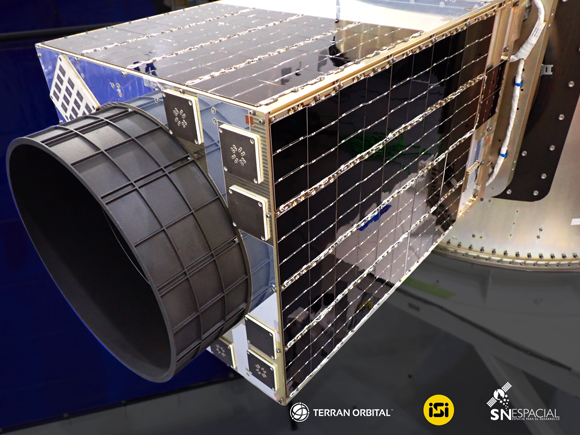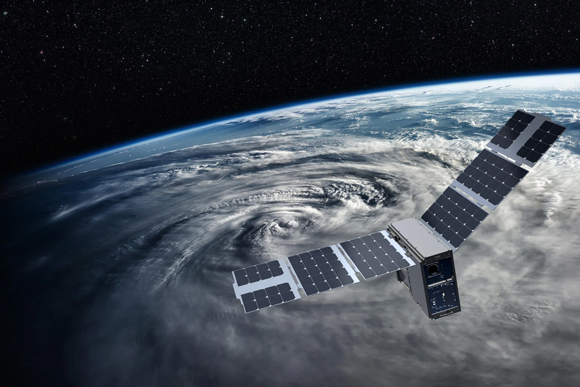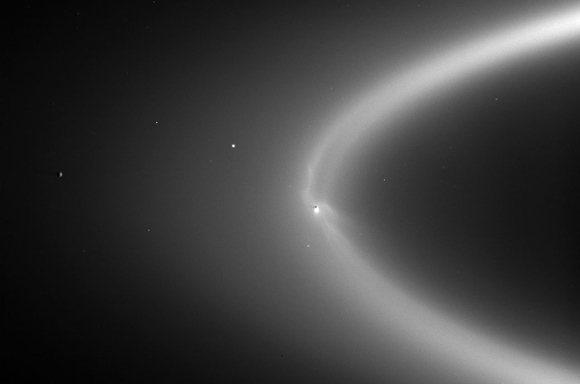Elon Musk promises another test set for this summer, the launch of two new Israeli satellites and SpaceX celebrates a notable achievement. Add to this, a remarkable discovery of phosphorus on one of Saturn's moons, and ongoing research into the effects of space on astronaut brain activity. This Week in Space.
Starship Set to Return in August?
Will SpaceX attempt to launch the Starship spacecraft again next summer? At least this is what company owner Elon Musk is promising, as he declared on Twitter this week that the next launch attempt is expected within six to eight weeks.
Elon proving doubters wrong time and time again. "Starship never flies". @elonmusk when is the next Starship test? pic.twitter.com/uOwFsrAHBj
— Tesla Synopsis (@TeslaSynopsis) June 13, 2023
The first attempt to send the giant Starship spacecraft for a partial orbit of the Earth took place about two months ago, on April 20. Although the launch itself initially went smoothly, despite issues with some of the engines of the Super Heavy rocket during its maiden flight, the spacecraft failed to separate from the rocket after roughly three minutes and following another minute of freefall, the engineers activated its destruction mechanism.
Now, SpaceX is grappling with both the failures that hindered the spacecraft's space entry, the damage resulting from the launch, and a Federal Aviation Administration (FAA) investigation concerning safety risks linked to the launch attempt from its South Texas space base.Compounding these problems is a lawsuit by environmental organizations over suspected pollution and damage to natural resources during the launch attempt.
Given these obstacles, Musk's expectation that the next launch will take place as early as August could be overly optimistic. Moreover, when asked only a week and a half after the April endeavor about the next launch attempt, Musk himself set a similar timeline of six to eight weeks for the next launch attempt.

A comeback launch soon? The Starship and its Super Heavy launch rocket on the launch pad in South Texas before the first attempt in April, which ended in an explosion | Photo: SpaceX
An Israeli Eye Watching From Chile
This week, the Israeli company ImageSat International (or ISI) launched its new observation satellite, Runner-1, as part of SpaceX's Transporter 8 mission. Like its predecessors, Transporter 8 was solely dedicated to the deployment of relatively small satellites - on this occasion, the Falcon 9 rocket carried 72 satellites into space.
ISI developed the new satellite in collaboration with the American company Terran. The satellite is small in size, its launch weight at the time of launch standing at only about a hundred kilograms, and it was launched to an orbit of 500 kilometers, where it is expected to operate for five years. "The new satellite constructs the image from three separate wavelengths, with each pixel (dot) captured in three wavelengths. This allows for a very high spatial resolution, up to an order of magnitude of a meter - something that has only been possible with much larger satellites, and it can also take color video from space," said Doron Shtruman, CTO of ISI, in a conversation with the Davidson Institute website.
Established in the late 1990s, ISI was designed to bring military satellite technology developed by the aviation industry to the commercial market. It operated the EROS series of satellites and sold satellite imagery to its customers. In recent years, it has become a publicly traded company, with the main shareholders being FIMI fund, the aviation industry, and Discount Bank. It employs 120 people and, in addition to selling intelligence products, it has begun to supply imaging satellites.
Runner-1 is the first of three satellites that the company sold to the Chilean government. While the company operates the first satellite alongside the customer, enabling them to sell its images to other entities, Chile will operate the subsequent two satellites independently. Additionally, Shtruman mentions, the company has agreed to sell two more similar satellites to other countries.
"We are already developing the next generation of imaging satellites, which will be called Knight," says Shtruman. "These will be satellites developed based on the Runner, but larger, with a mass of about 300 kilograms, and they will be able to achieve higher resolution. The first one is expected to join our fleet in about three years."

From selling images to selling the observation satellite itself. The Runner-1 satellite developed by ISI and Terran | Photo: ImageSat International
The Forecast: Crowded in Space
The American-Israeli company Tomorrow.io has raised an additional $87 million from investors for the establishment of a private satellite platform for weather forecasting. This completes a funding round of nearly $200 million, putting the company on a promising path to profitability. In conjunction with the Transporter 8 launch, the company's second weather prediction satellite, identical to the first one launched two months ago, was also deployed this week. Tomorrow.io is focused on developing technologies that will enable it to offer private weather forecast services to various organizations, challenging the dominance of government forecast services in the market. The two satellites it already holds in space represent the first out of a planned array of approximately 28 satellites that it intends to launch within two years. These are expected to provide broader geographic coverage and more reliable forecasts compared to existing services.
The company's satellites weigh 85 kilograms, significantly smaller than the weather satellites currently in use. They are equipped with a microwave radar for cloud mapping and additional atmospheric measurements, as well as an ultrasonic sensor for measuring air temperature and water vapor concentration. While Tomorrow.io focuses on developing the forecasting services themselves, the satellites are being constructed by external companies, and communication with them is handled via commercial ground stations.
Recently, the company has secured contracts to provide weather services, including three tenders from the U.S. Department of Defense totaling $30 million. Today, Tomorrow.io employs approximately 200 workers, the majority of whom are based in the United States, where the company's satellite activity is concentrated and a smaller team of several dozen employees is located at the development center in Israel.

An ambitious plan to deploy 28 such satellites into orbit within two years. Tomorrow.io's satellite in space | Simulation: Tomorrow.io
SpaceX's Achievement
The launch of Transporter 8 marked an important milestone for SpaceX, which has revolutionized the field of private space launches. This marked the 200th launch in which the first stage of the Falcon rocket successfully executed a vertical landing, enabling preparation of the rocket for additional launches at a relatively low cost.
This technology, which seemed like science fiction just over a decade ago, was first successfully executed in December 2015, and quickly became a routine event, catapulting the company's capabilities far ahead of its competitors. To date, SpaceX has accomplished a total of 239 launches, 200 of which, as mentioned, resulted in successful vertical landings.
Celebrating the 200th landing. The first stage of the Falcon 9 rocket successfully lands at Vandenberg base in California.
Phosphorus in Enceladus' Ocean
A recent analysis of data gathered by the Cassini spacecraft from water jets emitted from Saturn's moon, Enceladus, suggests that the subterranean ocean on this moon contains significant amounts of phosphorus - an element considered as one of the building blocks of life as we know it.
Enceladus, Saturn's sixth-largest moon, constantly ejects jets of vapor from the liquid ocean believed to exist beneath its thick layer of ice. Recently, scientists determined the intensity of one of these jets, which feeds into one of Saturn's fainter outer rings, known as Ring E.
The American-European spacecraft Cassini, which studied Saturn, its moons, and rings for years until its planned demise in 2017, traveled through these vapor jets, sampling and analyzing their chemical composition. Now a team of researchers from Germany, Japan, and the United States has examined Cassini's findings from its passage through Ring E and concluded that they also contain phosphorus compounds, not previously identified in the samples from the vapor jets themselves. The findings were detailed in an article in the Nature journal.
The researchers did not have direct access to the samples themselves, which crashed into Saturn together with the spacecraft roughly six years ago. but only to the data that the spacecraft had transmitted. Therefore, they tested various materials on a device similar to the one on Cassini, and found that the samples contained phosphorus at a concentration 100 times greater than that found in Earth’s oceans, mainly in the form of phosphate salts (PO43-).“Such high phosphate concentrations result from enhanced phosphate mineral solubility in Enceladus…”, said Christopher Glein, one of the researchers of the Texas Research Institute. “This key ingredient could be abundant enough to potentially support life in Enceladus’ ocean; this is a stunning discovery for astrobiology and a major step forward in the search for life beyond Earth," he added.
Phosphorus is one of the six essential elements for life on Earth (alongside carbon, hydrogen, oxygen, nitrogen, and sulfur). It is a crucial component in DNA, RNA, and energy-storing molecules in cells. The other five elements were already found in samples from Enceladus' oceanic jets, and the discovery of phosphorus there fuels the imagination about the possibility of identifying life in the moon's waters. However, the mere presence of phosphorus does not guarantee the existence of life or even complex molecules such as DNA - but it certainly gives new hope to those who continue the search.

The ingredients for life are there. Saturn's E ring, as captured by the Cassini spacecraft | Source: NASA/JPL-Caltech/Space Science Institute
Inflating the Brain in Space
Finally, what happens to astronauts' brains during prolonged missions in space? A new study reveals that brain ventricles, which are fluid-filled spaces within the brain, expand during extended stays in space. To prevent potential brain damage, the researchers suggest a minimum of three years of rest on Earth between such missions.
A team of researchers from the United States, led by Rachel Seidler from the University of Florida in Gainesville, analyzed CT scans of the brains of 30 astronauts, comparing the images taken prior to their departure into space and after their return. Eight of the participants embarked on brief missions of approximately two weeks, 18 remained in space for around six months, and four astronauts experienced nearly a full year in space. “We found that the more time people spent in space, the larger their ventricles became,” Seidler stated. “There is no measurable change in the ventricles’ volume after only two weeks,” said Seidler “The biggest jump comes when you go from two weeks to six months in space.”
Brain ventricles are cavities filled with cerebrospinal fluid (CSF) which serves to protect the brain from injuries and shocks, while also supporting nerve tissue nutrition and waste removal from the central nervous system. In microgravity conditions, more bodily fluids ascend to the head, causing the ventricles to expand and press against the brain tissue.
The exact implications of this ventricular swelling on astronauts are not fully understood.“We don’t yet know for sure what the long-term consequences of this is on the health and behavioral health of space travelers,” noted Seidler. “We don’t yet know for sure what the long-term consequences of this is on the health and behavioral health of space travelers,” she says, “so allowing the brain time to recover seems like a good idea. Many astronauts travel to space more than one time, and our study shows it takes about three years between flights for the ventricles to fully recover.”

After spending half a year or more in space, a rest period of at least three years on Earth is recommended. Brain scans | Photo: Elif Bayraktar, Shutterstock
